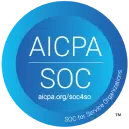4. Metrics to track and improve roadmap delivery effectiveness
In addition to tracking and driving ‘delivery focus’, the graphics below show some simple metrics teams can use to demonstrate the effectiveness/efficiency of the finite available resource. This combination of focus and effectiveness communicates to stakeholders that the delivery team is doing all it can to maximise value delivery and deliver on shared strategic/roadmap priorities.
The metrics to demonstrate ‘effectiveness’ are carefully selected to be a meaningful and balanced representation of effectiveness (following the ‘balanced scorecard’ principle) – most are understandable by non-tech literate stakeholders, which can be very helpful when communicating value delivery to internal customers.
Plandek is a ‘single pane of glass’ enabling teams to track a diverse range of Agile DevOps metrics (surfaced from the underlying DevOps tools used across the SDLC) while also allowing metrics to be overlaid with data imported from other business areas such as HR, finance, and customer data.
The figure below shows our suggested first-order (high-level) metrics set to accelerate value delivery efficiency.

This approach enables users to understand the relationship between software delivery and value creation. As an example, Deployment Frequency can be tracked relative to product NPS scores to demonstrate that as the frequency of deployment increases, so too does customer satisfaction.
A definition of each metric is provided below:
Throughput
Throughput is a measure of story points or tickets delivered over a period of time. This is a notoriously unreliable metric to view in isolation, as the story point and ticket size may change over time – consider it in context as part of a wider balanced scorecard of metrics. For further insight, track Throughout relative to the resource or cost associated with delivery (represented by team headcount or team cost data).
Lead Time to Value
Lead Time to Value (also known as Lead Time) is perhaps the core Agile delivery metric, measuring the total time taken to deliver an increment of software, from design to delivery to live. Therefore, it measures the entire SDLC (software delivery lifecycle) and is a broader metric than Cycle Time, which measures the time taken from Dev start to delivery to live. Both are key metrics as the fundamental aim of Agile software delivery is to deliver software ‘early and often’.
Deployment Frequency
Deployment Frequency is another core Agile delivery metric, measuring the time between new deployments to live. It hence measures the ability of a team to deliver software ‘early and often’ and is a good overall measure of Agile DevOps maturity. Multiple studies have shown a correlation between customer satisfaction (NPS scores) and Deployment Frequency – the more regularly you deploy, the happier your customers.
Sprint Target Completion
Sprint Target Completion is another excellent ‘North Star’ metric for any delivery team following scrum Agile. The metric tracks the ability of teams to accurately complete their sprint goals. This is a key measure of the dependability of an organisation’s delivery capability. If teams cannot reliably deliver their (self-imposed) targets for short sprints, then it is impossible to predict delivery milestones across multiple teams and longer periods.
Sprint Velocity and Carry-over
Sprint Velocity measures the output of each sprint in story points (SPs) – a useful metric for both tracking output over time and providing a starting point to use in estimations when planning value delivery. Carry-over is a key component of this, providing a clearer insight into what was actually delivered.
Escaped Defects
Escaped Defects is a good counter-balance metric as it tracks the overall quality of the software delivered in terms of bugs that have been spotted in the live environment. It is important to closely track quality relative to Deployment Frequency and Lead Time to ensure that quality is not suffering as velocity increases.
eNPS
eNPS is an employee NPS score collected by internal (anonymous) questionnaires. It reflects a summary of staff’s happiness and well-being reflected in the ultimate question – would they recommend working in the organisation to others?
The figure below provides an example of how Plandek enables you to present these metrics in annotated form for improved reporting to stakeholders.









